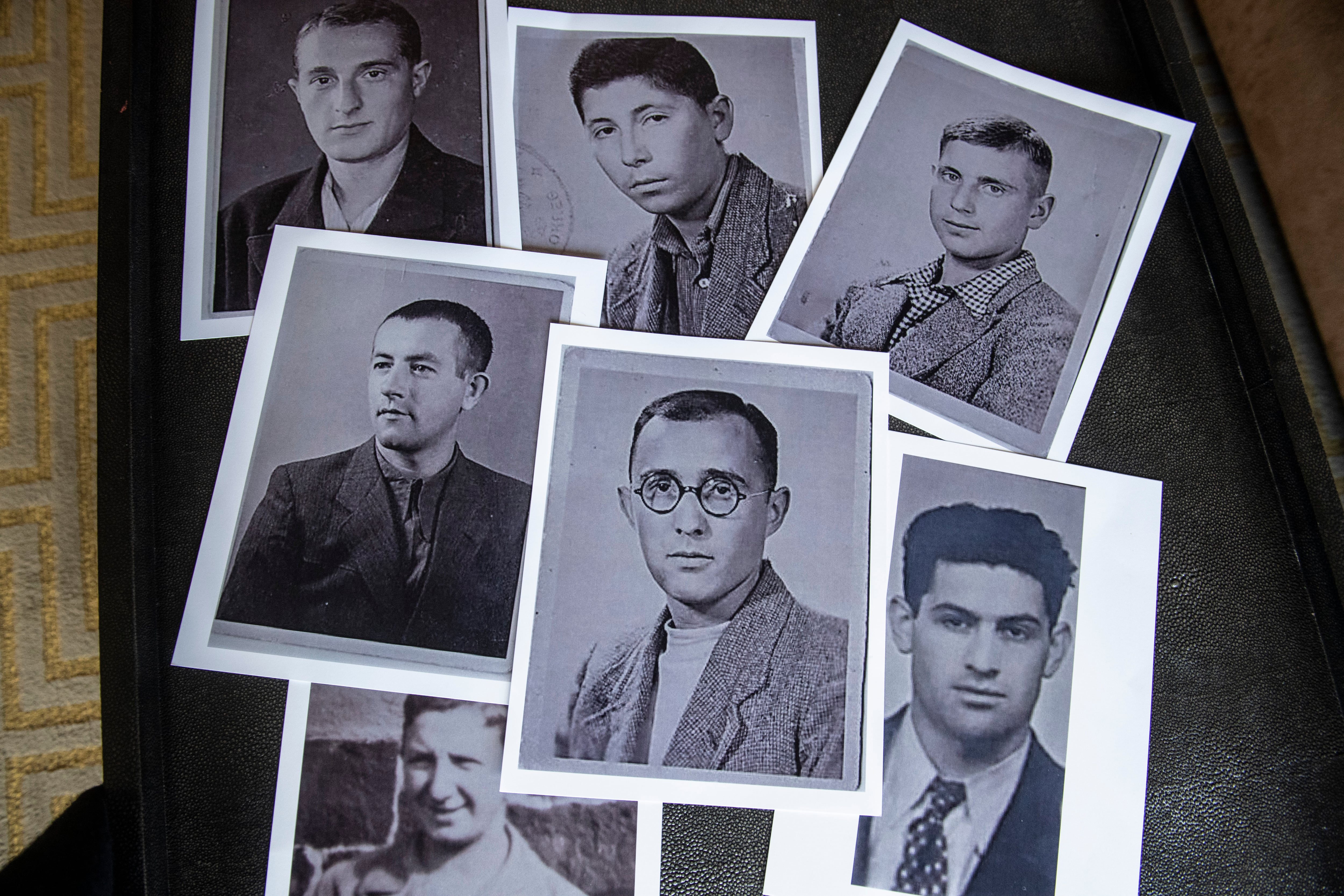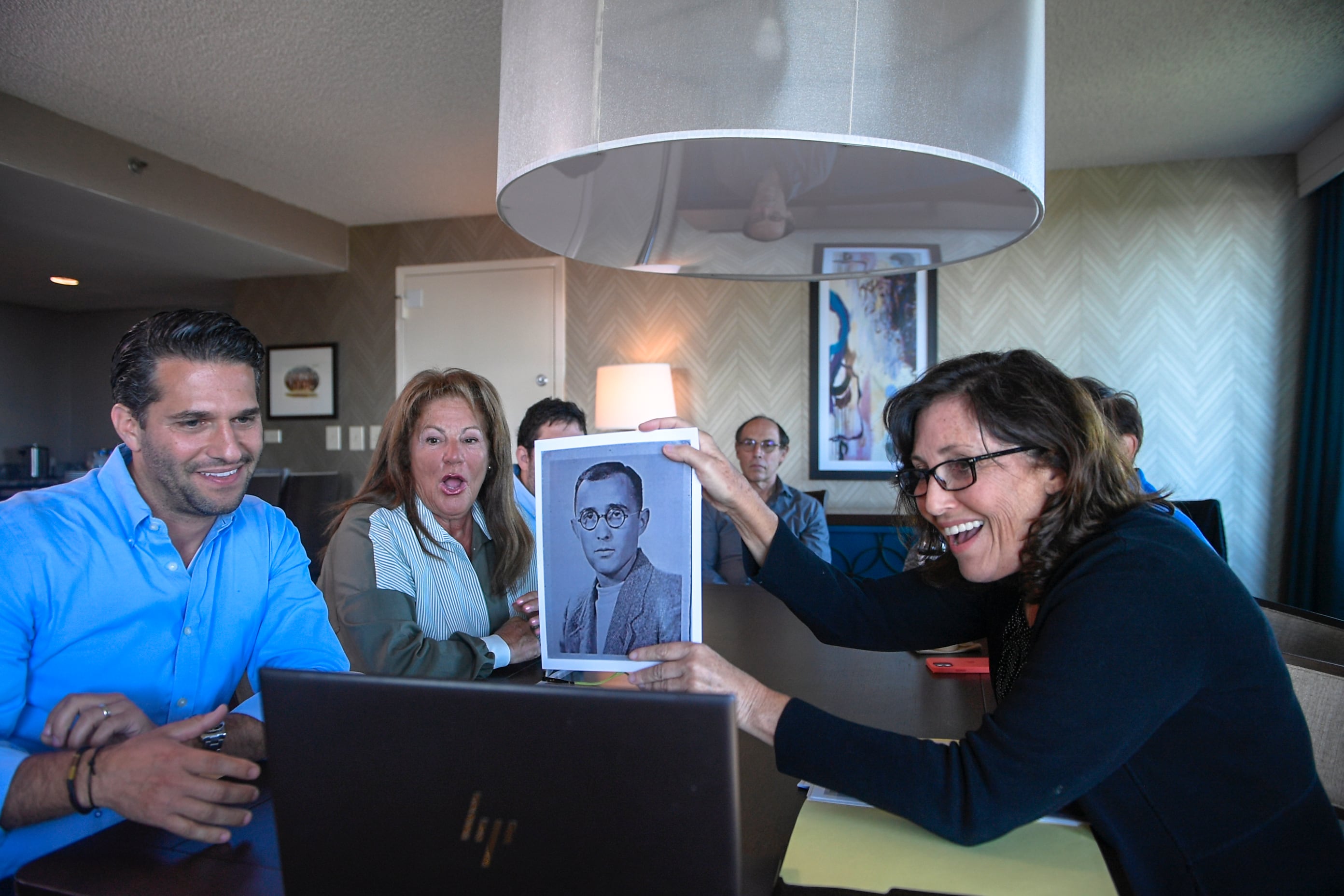WESTLAKE, Texas (AP) — Anna Salton Eisen found the old pictures of Jewish prisoners who survived the Holocaust in a folder her late father, George Lucius Salton, kept most of his life.
The Texas woman recognized the names of some of the teens and young men from stories her father told. For three years, the baby-faced captives lived among the dead and dying in barracks and boxcars as Nazi captors moved them from Poland to France to Germany.
George Salton was 17 when the U.S. Army liberated the Wobbelin concentration camp in Germany on May 2, 1945. Over the next few years, the survivors scattered around the world.
Salton proudly served in the same U.S. Army that had rescued him. He earned degrees in physics and electrical engineering. He worked in a high-level role at the Pentagon and held an executive position in the aerospace industry. Most of the survivors lost touch with each other.
But 76 years after American soldiers cut down the barbed wire and fulfilled the prisoners’ impossible dream of freedom, Eisen set out to bring together the survivors’ loved ones. Thanks to the speed of modern technology, she succeeded.
As Eisen began her research, she relied on names written in pencil on the picture backs or mentioned repeatedly in Salton’s 2002 book, “The 23rd Psalm: A Holocaust Memorial.”
But suddenly, the familiar names had faces.

“Seeing the faces of all of them really brought the story to life,” said Eisen, who discovered the photos while moving her mother, Ruth Salton, 99, from Florida to the Dallas area this past summer.
Eisen, 62, said she felt compelled to learn more about the confidants who had meant so much to her father, who died at age 88 in 2016.
As she combed through Nazi-era data, official documents, concentration camp lists and post-war records stored online through the Arolsen Archives at the International Center on Nazi Persecution in Germany, the Holocaust survivor’s daughter verified survivors’ names and dates of birth.
Through Ancestry.com, Eisen explored passenger lists of ships that took Holocaust survivors to other countries, Social Security cards documenting name changes, and obituaries and family trees.
Google and Facebook searches led Eisen to the children and grandchildren of her father’s friends, most of whom never knew — until now — the full story of what their loved ones experienced.
Todd Nussen, a high school history teacher in Oceanside, New York, reacted with shock — and excitement — when Eisen texted him in late July to ask about his namesake grandfather, Tobias Nussen, who died at age 52 in 1973.
“Now I have details. Now I have facts,” the 40-year-old educator said.
As a result of Eisen’s research, family members of eight Holocaust survivors met for the first time on a recent Sunday.
Some exchanged hugs and tears in person at a New Jersey hotel suite.

Others connected via Zoom from Israel, Sweden and Texas.
“It just gave me the chills,” Bobbie Ziff, 67, a resident of Jackson, New Jersey, said of the emotional gathering, which came together less than four months after the photos’ discovery.
Ziff is the daughter of Tobias Nussen and the aunt of Todd Nussen.
In America, her father built a new life and owned a Brooklyn, New York, luncheonette, Ziff said. He never talked about the Holocaust, but he often endured nightmares and screamed in his sleep.
Pictured in another of the photos that Eisen found: Motek Hoffstetter.
His daughter Aviva Findler, a retired high school teacher who lives in Tel Aviv, Israel, said her father, like many other survivors, refused to talk about the Holocaust.
“During the meeting, I found out he was very respected by his friends, which made me really proud and sad,” Findler said.
For much of his life, Eisen’s own father believed in keeping the past in the past.
Fellow survivors did the same, not wanting to dwell on their rotten teeth or explain why they refused to waste even a single piece of bread.
“It’s a wound,” Ruth Salton said of what she and her husband of 63 years experienced growing up. “We didn’t want any of our kids to carry the stuff that we lived through.”
But eventually, Salton ‘s three children — especially Eisen — demanded answers about his childhood.
With Eisen’s help, Salton recounted the details of his family’s Holocaust experience in his 2002 memoir.
“Every day blended with the next, filled with hunger, sleepless nights, hard labor and the constant threat of beatings, selections, and executions,” he wrote.
For her part, Eisen is writing a book of her own, “Pillar of Salt: A Daughter’s Life in the Shadow of the Holocaust,” which is due out next April. She is cooperating with a filmmaker, Jacob Wise, on a documentary based on her father’s experience and its impact on the second generation.
Eisen said the book title reflects her Jewish faith.
“I felt compelled to look back even though I was warned not to,” she said, referencing the biblical account of Lot’s wife turning into a pillar of salt.
“It was not easy for me to bring these other families the truth. It was painful. But it was their story, and it belonged to them.”
It’s important, she believes, to keep the reality of the Holocaust alive.
Aaron Eisen, Anna’s 30-year-old son, is co-author of “Pillar of Salt.”
“My grandfather, when he would give speeches, would say that the Holocaust was incomprehensible, that we can’t comprehend how this happened,” said Aaron Eisen, who attended the New Jersey gathering. “But I think over time we are beginning to comprehend, and what my mother is talking about, is that there’s still so much to learn.”
As Ruth Salton approaches her 100th birthday, even she now understands the importance of telling the story, she said.
“That is the only way to carry on,” she said. “I’m so happy that the children are interested. The children want to tell the story, and the children can now live and feel what we did feel all our lives.”





